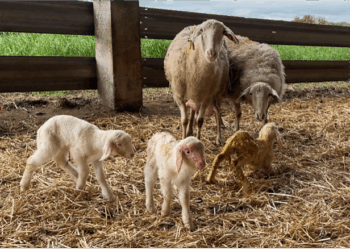Once again, the HIPRA Stats team highlights the fundamental role that data analysis can play in achieving greater efficiency on farms. This is largely because data analysis helps us improve animal health. The following video shows some disease control success stories, specifically mastitis and ovine respiratory complex (ORC).
Mastitis, controlling the problem
Mastitis in sheep and goats is a disease that has a significant impact on the farm, so implementing control and prevention measures is crucial.
HIPRA Stats highlights the importance of the somatic cell count (SCC) as a key part of udder health in sheep and goats
Monitoring and interpreting certain parameters opens the door to strategic decisions.
For example, an overview of the flock/herd’s udder health can be obtained by analyzing fluctuations in the SCC throughout lactation, facilitating the identification of patterns and trends that could be indicative of some form of disease.
Analysis of results obtained with vaccination
We can also evaluate the effectiveness of preventive measures, such as vaccination.
A study of the VIMCO® vaccine against mastitis in sheep revealed promising results. The vaccine led to a reduction in individual and bulk tank SCC, as well as an increase in production.
Individual SCC fell by 17% in the second year of vaccination with VIMCO®
Control of ovine respiratory complex (ORC)
In lamb feedlots, ORC is an important and re-emerging disease.
HIPRA Stats participated in a study in which clear benefits were shown when vaccinating with Pasterbact®, a vaccine containing Mannheimia haemolytica leukotoxoid.
Data demonstrates high efficacy in protecting animals against the M. haemolytica leukotoxin
The group vaccinated with Pasterbact® showed better productive parameters and lower morbidity and mortality rates were observed. Furthermore, the profit per lamb was +€3.21 in this group.
Return on investment
When we talk about implementing any measure on the farm, it is vital to know its profitability. That is why the return on investment (ROI) of vaccines is a valuable indicator.
Investing in prevention can lead to significant benefits in the short and long term
As we have seen, by vaccinating with VIMCO® we can increase the quantity and quality of milk, which can translate into greater income; especially if there are bonuses for low SCC.
For Pasterbact®, the reduction in mortality and higher live weight contribute to an increase in meat sales.
Conclusions
Optimizing resources and maximizing results are more essential today than ever, and HIPRA Stats has demonstrated how data analysis is a great way to achieve these objectives.
The combination of accurate data and well-founded strategies will help us to achieve the best possible health, production and profitability on our farms.
Article written by:
Tania Perálvarez Puerta. Global Product Manager, Small Ruminants Franchise – HIPRA




